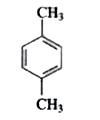A
B
C
D
Text Solution
AI Generated Solution
The correct Answer is:
|
Topper's Solved these Questions
CHEMISTRY AT A GLANCE
ALLEN|Exercise ORGANIC CHEMISTRY|472 VideosView PlaylistCHEMISTRY AT A GLANCE
ALLEN|Exercise ORGANIC CHEMISTRY|472 VideosView PlaylistChemical Equilibrium
ALLEN|Exercise All Questions|30 VideosView PlaylistELECTROCHEMISTRY
ALLEN|Exercise EXERCISE -05 [B]|38 VideosView Playlist
Similar Questions
Explore conceptually related problems
Knowledge Check
Similar Questions
Explore conceptually related problems
ALLEN-CHEMISTRY AT A GLANCE-INORGANIC CHEMISTRY
- In which of the following reactions hybridisation of underlined specie...
06:05
|
Play - Dipole moment of is 1.5D. The dipole moment of
03:46
|
Play - Which of the following compound has non-zero dipole moment
03:28
|
Playing Now - Which of the following molecule is planar due to back bonding
04:26
|
Play - Amongst the following , molecule having maximum bond angles of 90^(@) ...
05:14
|
Play - Which of the following statement is incorrect
04:43
|
Play - The coordinate bond is absent in
02:52
|
Play - Which of the following is least stable ?
01:55
|
Play - The true statement from the following are
05:04
|
Play - The bond order for Ne2 and C2, respectively are
04:25
|
Play - Back Bonding
05:15
|
Play - The bond angle in H(2)O molecule is .. .....
01:51
|
Play - What is the order of stability of N(2) and its ions ?
06:56
|
Play - Which of the following have identical bond order?
05:26
|
Play - In XeF(2), XeF(4) and XeF(6) the number of lone pairs on Xe is respect...
05:01
|
Play - Which one of the following compounds is the most soluble in water?
01:27
|
Play - The correct order of N-O bond lengths in NO, NO2^- , NO3^- and N2O4 is
04:53
|
Play - The correct order of A-O-A bond angle of (A=H,F or Cl)
02:46
|
Play - There are some species given below :- {:((a)O(2)^(+),,,,(b)CO),((c)B...
02:28
|
Play - Which of the following has fractional bond order ?
05:30
|
Play











